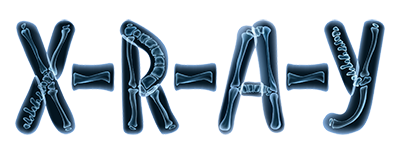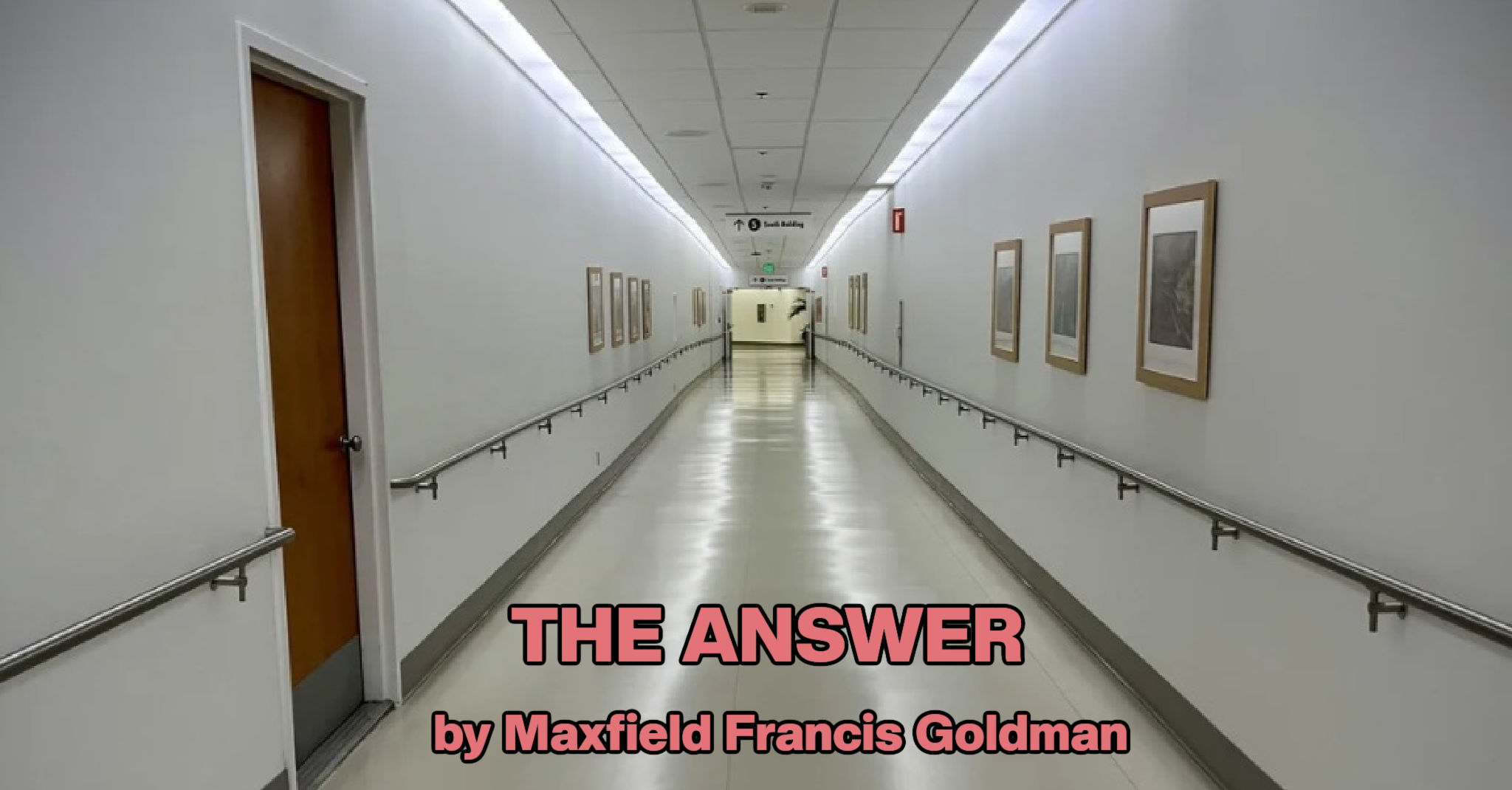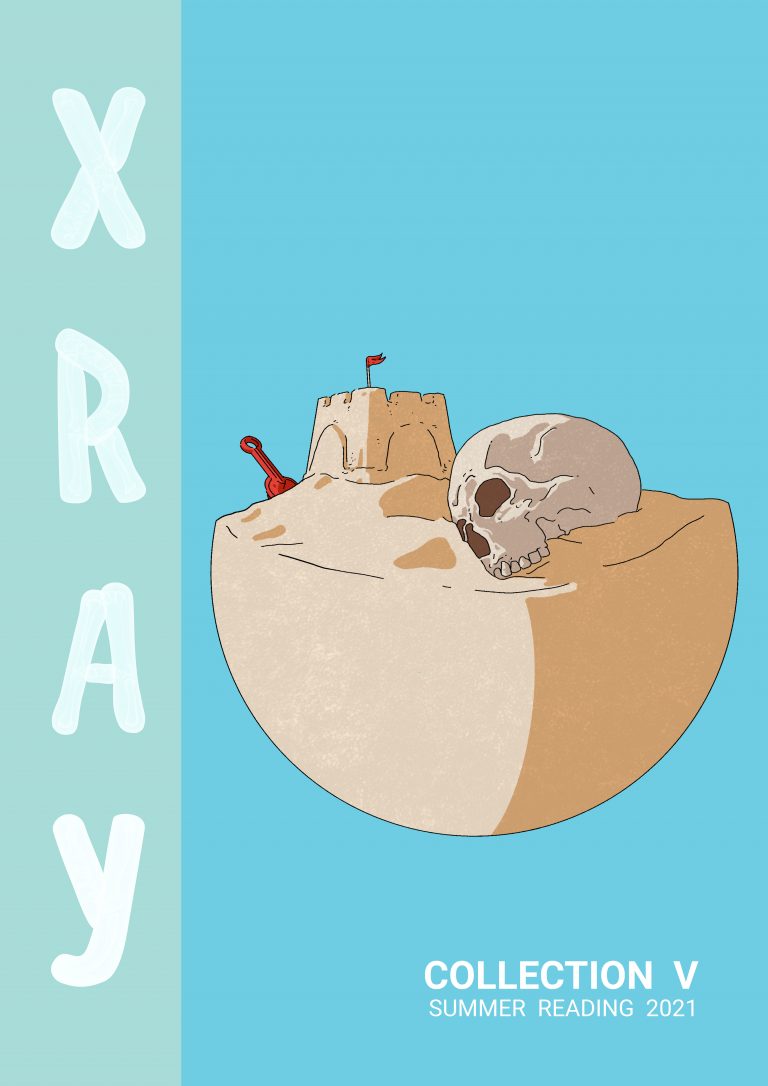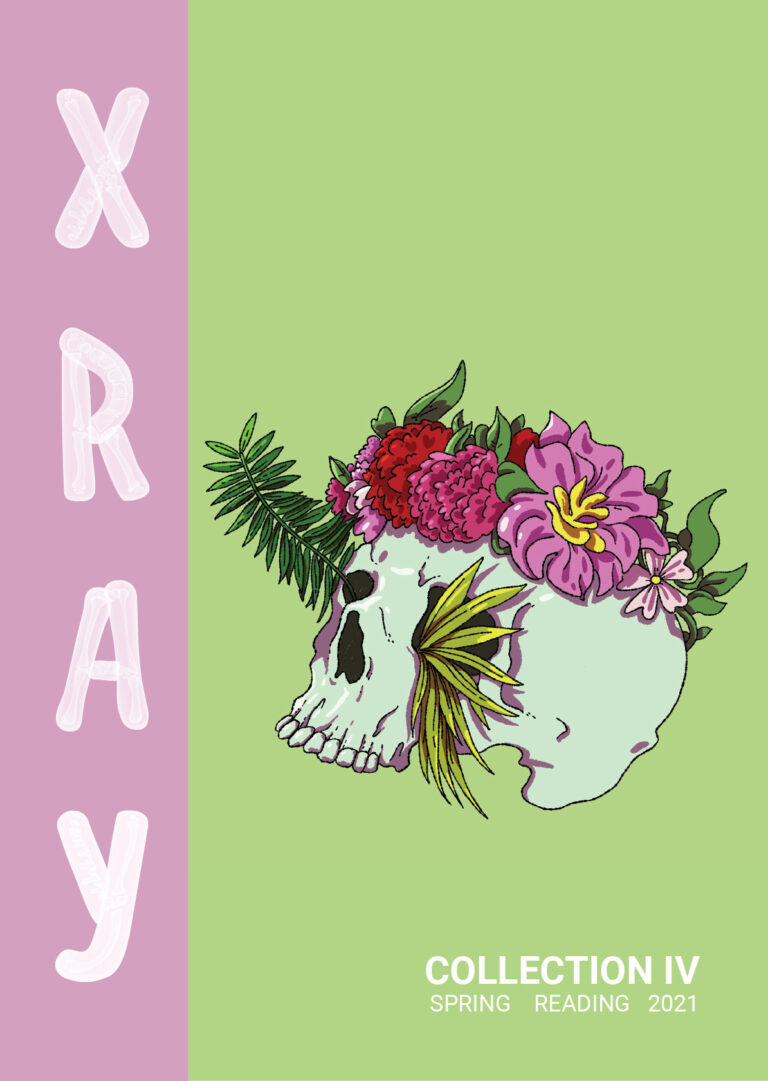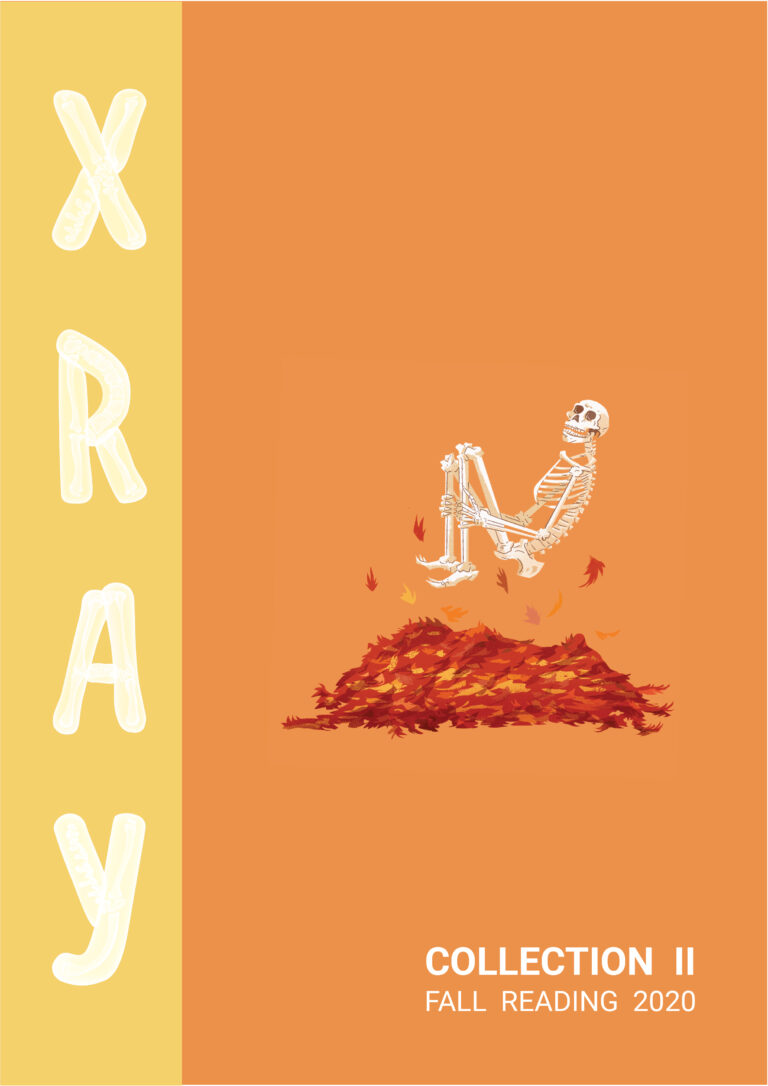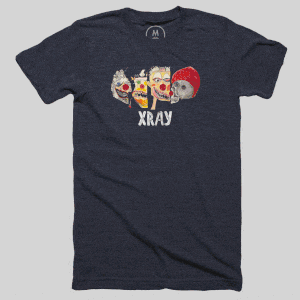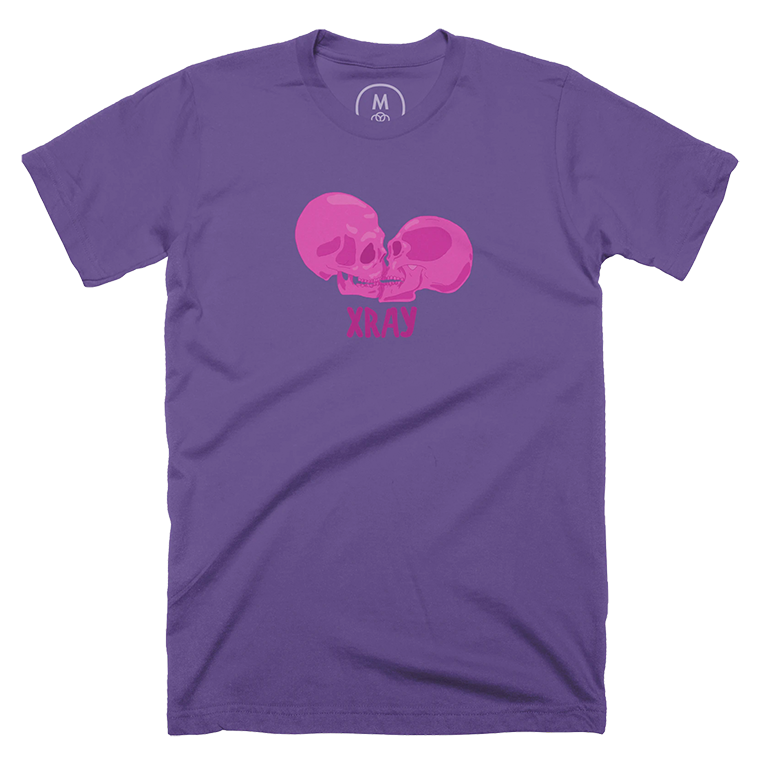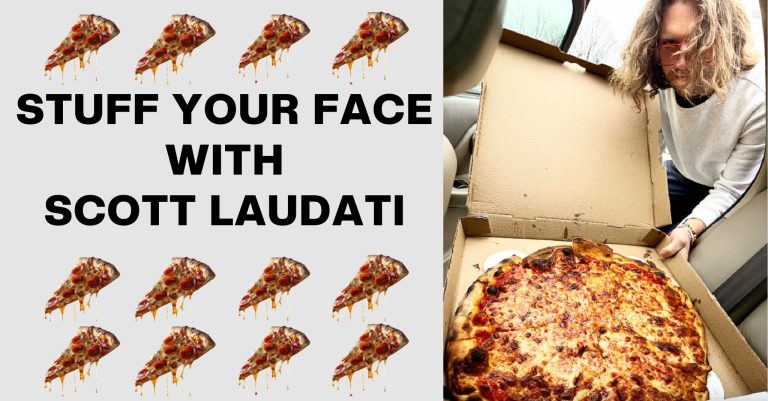
STUFF YOUR FACE WITH SCOTT LAUDATI by Scott Laudati
The Title Fight: Frank Pepe’s VS. Sally’s. New Haven, CT
Once upon a time, back in the closed society that was 1990’s Staten Island, there was a wholesome order. Our fathers grew up in our houses before us and so we ate the same pizza on Friday nights they’d always eaten, because we were still Catholics then, and we didn’t consume meat on Fridays to honor Jesus’ sacrifice of his own flesh. You knew your local pizza guys by name, and if you’d done good in school they’d send you home with a ball of dough to play with, and when it was time for a birthday party you’d order ten pies from them, not the new place down the street with coupons, and you’d sign your tab with a handshake, because trust maintains loyalty, and that kind of thing was really important in those days. But sometimes you had basketball practice across town. And if another father was driving you home you’d stop at his favorite joint, which he’d swear was the best on earth, and you’d be introduced to something totally new. If you went northeast (where the Brooklyn escapees landed), you might end up with a Sicilian pie. If you went closer to Bayonne (Denino’s), no matter who you were with you got the garbage pie (this was an Island favorite). Each neighborhood had something they specialized in, from stromboli to rice balls. There was one constant no matter where you went, though: it was always good. It had to be. The law of the land demanded it.Our fathers were all cops, firefighters, or sanitation workers. Each morning and night they would leave their Alamos and venture to the alien worlds of the other boroughs. I didn’t understand them as separate entities back then, and they were as relevant to me as Nicaragua and Ohio. My dad, like the other dads, had gone to battle in New York City in the ’70s and ’80s, so there was no way they were bringing their families there for a day trip. But, like archeologists going out into the jungle, sometimes they’d return with artifacts. My father was stationed in Little Italy, and every now and then he’d come home with a Lombardi’s pie. Or Tommy The Tank down the street, his dad was up on 125th in East Harlem, and he’d bring home Patsy’s three days a week. So I was always curious about the pizza world beyond my own, because those ovens they used out there in the foreign lands of the City, they were already ancient by 1990, and they did something to a sheet of mozzarella and a thin crust of dough no modern ovens could. I wanted to find the best. And in a world before the internet, word of mouth was the only way to map a trail.Pizza is one of those things that can immediately bond two people that otherwise have nothing in common. More so than even a sports team, because you both know you’re part of the smallest fraternity on earth. I got invited to the birthday party of a painter my age who lived in the backroom of a third story art gallery above a Crown Fried Chicken on the worst block in Newark, NJ. We’d never met before. His girlfriend’s dad was smoking crack out the window and his cat had just stolen one of my cousin’s chicken wings and was growling at anyone who got close. The painter put on a Spumoni Gardens hat, which is like throwing up a gang sign to the right person, and then we teleported to the roof and geeked out about all the legendary slices we’d had over a pack of cigarettes. I had a BA in pizza but this dude was a Doctor. He knew where the basil came from that Di Fara’s used. He had the secret Spumoni Gardens recipe many had died for. And he said something I’d never heard before. He said, “The best pizza comes from New Haven.”
FRANK PEPE PIZZERIA NAPOLETANA New Haven, CTThe lists get longer every year, but the top spots never change. Frank Pepe’s is always first or second. Frank and his wife, Filomena, came to New Haven from Italy in 1920. They spent a few years walking around the Little Italy of Wooster Street selling tomato pies until they could afford a store. In 1925, history was made as Frank Pepe Pizzeria Napoletana opened its doors. It’s hopped back and forth a few times between its current 163 Wooster Street location and the place next door (157 Wooster Street), but the same oven’s been used since 1925. And it’s a beauty. It’s a white tiled coal oven that stretches almost wall to wall, making it more than double what a New York oven could ever be. The original pies didn’t have cheese because there was no refrigeration, so you either got a tomato pie or tomato pie with anchovies. In the 1960s Frank Pepe secured his name in the history books when he invented the clam pie. When I was a kid this specialty was only found in a few restaurants, but now the clam pie is available everywhere, and exists in the cannon up there with pepperoni as one of the few acceptable toppings. The same guy’s been shucking the clams for 40 years. The turnover rate is small. Most of the staff shares the family name. SALLY’S APIZZA New Haven, CTSally’s is the other top spot and they jockey back and forth with Pepe’s. They’re only a few feet away from each other and I guess Sally’s main advantage is that on the one-way street you pass it first. The sign that greets you hanging above the front door immediately pulls you into the family-style tavern. Where Frank Pepe’s clean white pizza oven and kitchen make you feel like you’re going to your Grandparents’ house for a Sunday dinner, Sally’s reminds you of the local bar you’d stop at when you go back to your hometown. The walls are the wood panel of your childhood basement. The floor is a dull brown tile like your friend’s house whose parents still smoked inside. It’s almost as old as Frank Pepe’s but it doesn’t look classic. And it’s still lit by the same stained glass lampshades that hang above pool tables in midwest bars. You can’t ask for a better setting to melt the roof of your mouth and extinguish it with a fountain soda. No one who’s ever sat there has asked for more. There is no more.The Verdict
It would be stupid to declare a winner here. The two best pies on earth exist within half-a-block of each other. They have the same oblong oval shape. They have the same thin crust—well charred but not burnt. The interior of each restaurant feels like two sides of the same home. And the same family is behind both of them (sisters, daughters, and sons bleed through both family trees)! It’s like deciding between your favorite dog or your favorite band. I like Sally’s better, but only by the smallest margin in voting history. And it could just be the novelty. The first few times I went to New Haven, Sally’s had weird hours and it was never open, so I ate a lot of Frank Pepe’s, which blew everything else I’d ever eaten out of the water. But when I finally got ahold of a Sally’s tomato and cheese pie, I felt like I’d bitten into the main conductor of the Universe. It was almost spiritual, a realization that as men we didn't deserve something this good, and yet, whatever’s in charge still decided to give it to us. It was The Holy Grail. Now that you know you’re in good hands at either Pepe’s or Sally’s, I’ll give you some advice. Back when I started going to New Haven you could get a table and eat inside. If you attempt to do this now you will ruin the experience, because you’ll be waiting and starving for hours. Call ahead and order your pie at least an hour early. You’ll see the word APIZZA everywhere, it’s pronounced “ah-beetz,” but if like me, you feel stupid saying that, you can tell the nice lady on the phone you want a “Large tomato and cheese pie.” When you arrive you’ll see a line in front (this goes for both Sally’s and Pepe’s). These are the people waiting to dine inside and they’ll be there forever. Walk right past them (they’ll be mad), and enter. A kid will be sitting at a table. Tell him you want to pay cash. He’ll send you inside the restaurant and you’ll have a minute or two to look around, take a quick picture, marvel at that ancient wonder of a pizza oven, and then you’ll get your pizza. On the way out that kid who sent you in will have a bucket of plates, cutlery, and napkins. Give him a small tip, take what you need, and then head back out. There’s a great little park in-between Sally’s and Pepe’s with a bench you can sit and eat. Or, you can go one block north to Wooster Square Park, a beautiful brownstone-lined patch of grass no one is ever at and eat your pizza in peace, looking up between bites at some of the only original architecture left in a city that used to be known for its elegance and gentry. The real winner of the pizza wars is New Haven. My head still shakes every time I say that. Follow Scott’s international adventures, food-based and otherwise, on his YouTube channel.
XMAS STORIES FOR X-R-A-Y by Kevin Sampsell
New Smooth Santa
Christmas was approaching, but Santa had no beard. He’d shaved it off that summer after his dog, Carol, gave him fleas. He thought he would be able to grow it back by the holiday season, but his face was still smooth as a baby. He couldn’t understand it. Long white beards ran in the family, from his father, Nick Sr., to his uncle, Walt, and brother, Richard. Even his sister, Nicolette, had a glorious white beard, which she often braided with garlic to keep vampires away (as a child, she was traumatized by the 1922 film, Nosferatu). Santa looked in the bathroom mirror hopelessly, rubbing his sleek features. He had to resort to fake beards when greeting children at the mall. Some of the kids even tugged at the false hair rubber banded around his ears and looked disappointed. He’s not the real Santa, they would tell their parents. Santa would try to dispel the rumors by casually showing everyone his driver’s license. Deep down in his gut, though, he was warming up to life without the beard. He felt more youthful, lighter, and aerodynamic. He wondered if he could somehow “rebrand” his Santa Claus image. It would likely require a strategic marketing campaign. But he knew it probably wouldn’t work. Maybe the fake beard was the way to go. His new smooth look would make the rest of the year easier for him; he could finally be incognito. He liked the idea of a new image for Santas of the future. One that looked like a chubby Ryan Gosling. Honestly, it would give his confidence a little boost when applying for jobs in the spring.The Christmas Banana
The Christmas banana went to the staff party. There were mocktails and gingerbread cookies on a long table. People danced to music that was popular on the radio twenty years ago. They jerked their limbs, seizure-like, and squirmed joyfully on the floor. The DJ wore an elf’s hat that made him look like a child. The staff party started at 3:00 in the afternoon so people could still leave the office at 5:00. After 5:00, people were allowed to drink alcohol and do drugs. Some people took off their clothes and abused the photocopy machines. Christmas tree ornaments dangled inappropriately on body parts. Candy canes were licked, then discarded into filing cabinets.The Christmas banana was only a banana on this one day every year. It was the highlight of the year for him. Something about the snazzy shade of yellow and the way his skin peeled away from his body. It felt like his truest essence. In his prayers, he wished he could die this way. In his dreams, he was a banana everyday and forever.
LOOKING AT YOU, LUCIEN by Isabelle Yang
Lucien, Lucien, a love I invent,
Lucien, Lucien, wrapped in linen and light, tucked deep in cement,
Lucien who loves little white cries and custard-filled pies and whom I despise,
Last quickly like lust,
Persevere alone if you must,
Lucien, Lucien, a boy I deny,
Lucien, my Lucien,
I lie lie lie.
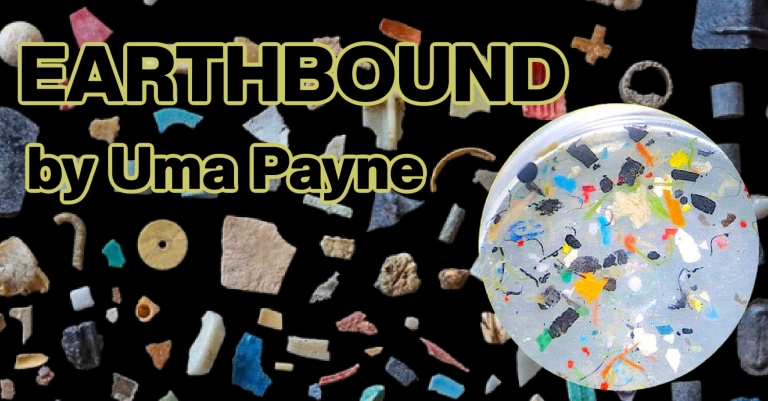
EARTHBOUND by Uma Payne
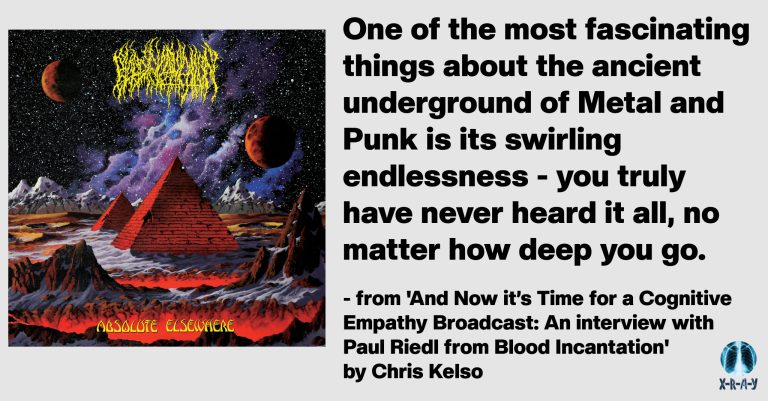
AND NOW IT’S TIME FOR A COGNITIVE EMPATHY BROADCAST: AN INTERVIEW WITH PAUL RIEDL FROM BLOOD INCANTATION by Chris Kelso

LET’S TALK ABOUT DESIRE by Dana Jean Rider
***
The stationery store is an image of satisfied vacancy. Blank pages of specialty paper pads, notebooks, envelopes, and planners stare down from the shelves. Down the middle of the room, a long table of pens organized into little glass cups. Full ink chambers and empty pages are a promise—someday, they will carry meaning. Behind the counter, font displays for monogramming and a locked glass case of fountain pens, a couple of which cost more than my rent. I hunch over the cash register, waiting to be asked about prices or cardstock weight or ink flow or line width. The owner of the store is named Connie. She is a tiny woman with hair so long it brushes the backs of her knees. On my first day of work, she told me she had hired me because I looked scholarly. Like a poet, she said, but the kind who still wrote on paper instead of on a computer screen. Microsoft Word isn’t poetic, she said, and my glasses-plus-turtleneck-plus-haughtiness look would be good for business. I asked her if she really thought I looked haughty. She said it was a compliment. Connie is obsessed with love letters. She carefully copies loving lines of famous authors onto expensive floral paper. When she finishes, she frames the pages and pins them to the walls. Right now, she’s working on transcribing a collection of letters between two Victorian poets who have very complicated ways of saying they’d like to touch each other. Behind my head at the register: “What I do and what I dream include thee, as the wine must taste of its own grapes.”I fill orders of monogrammed stationery for all kinds of people. Businessmen prefer plain colors and typesets and pay with company cards. English lit majors prefer gilded edges and offer torn coupons from advertisements Connie places in the college newspaper. Connie looks at the empty store and says, Get ready, a group of customers just got off the train. Connie is also a psychic. Once, she suggested that she could offer me a reading in exchange for two hours’ pay and looked genuinely sad when I declined. I nod and straighten piles of journals. The rest of the shift is quiet.***
After P left me, I found a therapist named Belle. She has uncomfortably large eyes. Uncomfortable for me, I mean, as the object of her gaze. In my first session, she asked me why I wanted to try therapy and I told her that my boyfriend of many years had broken up with me. She asked why we broke up. I told her that we didn’t have sex anymore. She asked, was that really the reason, and I said, yes, we hadn’t had sex for months before he left. Her: How many months? Me: At least twelve. So, a year. Yes. What changed? I don’t know. Except. When we had fucked, he would get all misty-eyed and wholly consumed, and I would be thinking hard about anything else. I wanted to be into it like he was, but mostly I was impatient, as if I were waiting for a bus. For him, it came easily—he came easily. But my orgasm still feels unsolved and private. Also. Sometimes I get stressed when I have to eat a large sandwich. That’s not a euphemism for anything, exactly. An enormous, unwieldy sandwich with no obvious entry point for biting. I’m relieved when it’s over, without once accomplishing enjoyment during the eating process. Chewing as a structured, mechanical action—just: I have to clean up this mess. The only satisfaction comes from the task being complete. So, that’s how sex was, and why I stopped having it. I thought we had reached the perfect equilibrium. P did not. Belle didn’t have much to say about the sandwich. She said instead, Let’s talk about desire. I said okay, so we did. My task, she said, was to recognize desire when I saw it in others.***
A text arrives from my friend Amanda, who lives far away and is very into fitness. If I let her talk about herself, she will tell me about things like personal records and her favorite athleisure brands. Once every few months Amanda texts me to check in about my life and hers. We were friends in college, and every interaction since then has been perfunctory. I can see my last response in our text thread from a few months ago when P and I were still together. There, I’ve gushed about a new sofa we had recently purchased. I told her I had found a nice seafood restaurant that I went to alone because P was allergic to fish. In response, she said that she had recently run a charity 10K for drug addicts. I hadn’t replied. I draft a reply to her most recent text. I say as little as I can while still being honest: I work two jobs and live alone. My apartment is covered entirely in linoleum and it usually smells like dryer sheets. Recently, I have developed a fondness for canned fish. It is most of what I eat.***
I’m picking up a particularly large dog shit at SCENE when I see the yoga woman walking toward me. She’s wearing a velvety beige tracksuit that looks a size too small and a golden necklace that says Bianca. I look at the place where the brown skin of her midriff sticks out, then at her eyes, which are crinkly with a smile. She says that she’s glad she doesn’t have a dog. I nod and say, Me too. She frowns for a moment then recovers and says, See ya. I wave to her with the hand holding the poop bag. Damn it.***
Connie likes to interpret dreams. Specifically, my dreams. Specifically, as soon as I arrive at the store in the morning. Instead of “Good morning” or “Hello, employee,” she says, What did you dream about last night? Admittedly, I am the sort of person to consider all of those things fake. But with Connie, that certainty lets me revel, safely, in the idea that they might be real. I tell her that I dreamed about a hotel. Hotels, she exclaims, clasping her hands together as though she has been gifted something marvelous. Hotels are spaces of transition. You don’t arrive in them to stay forever—you stay briefly, then leave. Probably you never return. You stay in other hotels, but you never come back to this one, or that one. You’re in a room mimicking a home, but you are not home. There’s no food in the fridge except leftovers that you will inevitably throw out. There’s cable TV, which you don’t have at home. You’re a different person in this different place. Impermanent. But if I say anymore, I’ll have to charge you for a reading, ha ha. Just promise you’ll still be available on Saturdays after your grand change!***
In the dream, I’m in a room with two crisp, white beds. P is in the bathtub. He asks me to get him a disposable razor from the front desk, even though in reality he’s a near-entirely hairless man—one of the reasons I was attracted to him. When I go into the hallway to look for the lobby, I can’t find anything. The carpet goes on endless, impossible. The doors I pass open at random and I see people inside. They’re watching TV with gaping mouths. They’re crying and pulling their hair. They’re fucking in weird positions I suspect P had wanted to try. I eventually reach the end of the hallway, where ornate, imposing doors open at my touch. Inside, Bianca is executing a perfect king pigeon pose. She is naked, breasts facing the ceiling. I try to go inside the room. Then I wake up feeling unoriginal.***
I tell Belle about the desire I’ve seen in others. I see the glimmering eyes of customers who wish they were a different kind of person—maybe someone who writes letters by hand to send to estranged friends, or maybe just someone who spends hundreds of dollars on stationery. I see Connie’s desire to tell the future and maybe her desire to find her own love hidden in the letters of others. I see the stern desire of tenants at SCENE to not be like me, the girl working off rent money by collecting others’ various wastes. It’s interesting to me, Belle says, that most of the desires you observe are nonsexual in nature. Sometimes, I say, I see men’s desire for me or for other women. They make it very obvious. Does that ever frighten you? Only the normal amount, I think. Do you want to talk about fear? No, not really. I think I’m really getting somewhere with desire. And where do you see desire in yourself?***
Bianca isn’t doing yoga when I arrive at the regular time. The drapes to her apartment are partially closed, but I can see her absence in the living room. No yoga video, no downward-facing dog, no pink shorts. For the first time, I examine the room itself, nose pressed to the glass: expensive-looking furniture, a large, wall-mounted television, a stack of books on the end table that all have to do with personal improvement: diet, exercise, self-esteem, finances. Beyond the living room, a well-stocked kitchen with open cabinets that reveal a series of identical, clear plastic containers with various granolas and crackers. Even the hand soap has been decanted into a clear plastic dispenser. The apartment is organized, intentional. I think of my own linoleum box. My fresh-linen air and cans of fish. No books to be seen, because P took them all, but slanting piles of celebrity magazines encircle my unmade bed. I sweep leaves from around the mailboxes. SCENE trusts enough in its own gates and safety that they are just boxes, no locks—so I look. Of course I look! Bianca Williams, apartment 124. She has a subscription to a magazine full of high-end business attire. The models look nothing like her—in that they are all white and draped in stringy muscle—but also nothing like me. They have bulges and caverns in all the right places. They shoot lusty looks at the camera that has plastered them onto glossy pages. I ask myself about my own desire.I waste time checking parking permits, and soon Bianca comes home—drives up in a small, blue BMW and emerges with a friend in tow. They have an aura about them like they’re drunk. They smell like brunch. I hover nearby with my clipboard of license plate numbers and she doesn’t see me or doesn’t care. When they are inside, I hear overlapping voices and rising laughter. I chance a look through the window and see them sipping wine at her kitchen table. I leave them like that, vague, giggling outlines in the background of the room where Bianca does her yoga.***
Canned fish can range in price from ninety-nine-cent tuna—the kind from companies that have been accused of using dolphin meat—to pricey tins of swordfish or anchovy that can only be purchased at specialty stores. These expensive versions usually have an old-world, art nouveau design to them, muted colors and complex line art that evokes church architecture. It’s like I’m meant to think I’m royalty from a country that doesn’t exist anymore—an Eastern European countess feasting on caviar at teatime, instead of a thirty-something sitting on a rug she bought to hide some of the linoleum, eating canned fish she can’t quite afford with the tiny fork that she used to use to crush up pâté for her cat. The cat is dead now. “Tin fish” is a luxury good. I sink the fork into the pale fish flesh and try to connect to decadence.***
I tell Belle that I think I have found my desire and she nods in encouragement. I tell her about Bianca and she asks how we met. I tell her, she talked to me about dog poop. And? No, that’s all, except I see her doing yoga through her window. Belle is quiet for a long time. Her face goes taut around the mouth. She explains to me why it is inappropriate to watch someone through their window. No, no, I know. I know that. So why did you do it? My turn for silence. If you are going to put desire into practice, it must be able to be reciprocated. You can’t just watch someone through a window.No, no, I know. Belle, frowning now: This is a good moment to practice empathy. How do you think she would feel if she knew you were watching her? I try to consider this, but as I’m forming an answer Belle continues speaking, so I guess the question is rhetorical. Is this the first time you’ve had feelings for a woman? Yes. Or, no. I had friendships when I was younger where I thought I felt differently than the friends. But it wasn’t a distinct, oh-please-let’s-touch thing. Just an ache in the back of my throat that only appeared on occasion. And anyway, how do you tell the difference between loving how someone exists and loving them? Are you trying to find the difference between love and envy? I would say, picture yourself with them, then picture yourself as them, and see which is better. We talk a little more about Bianca, but nothing very helpful. I stop seeing Belle after this session.***
When I finally let Connie do a reading in exchange for half of my Friday wages, she has this to say: I’m getting the sense that you place a great deal of value on being liked. Which is good, as a sales associate! But maybe bad for a regular person. You will have people who like you in the longer term, but you’ve entered a dry spell of camaraderie right now. You are on your way to other things—interesting how this lines up with your hotel dreams! Think of this time as your space of transition—not this job of course, which you’ve told me you’ll be at for a long time. While you wait for a change, find a practice ground for feeling the connection you seek. Yes, we all need practice, not in feeling our feelings, but in making them known and meaningful for others. It is good that your biggest hurdle is figuring out what you want—what an interesting phrase, to “figure out.” I’ve done other readings where the biggest hurdle is avoiding a looming and painful death. So, you probably won’t die! But if you start to feel sick, tell me and we can try again. Listen, have you ever tried yoga? It may help with any number of your problems and paths and potentials. You will soon come into a small amount of wealth—not money, necessarily. You will have a slight headache for the next three Thursdays. Oh, and you’ll make a big sale this afternoon! Custom “from the desk of” stationery order.***
For a while I stop showing up to my job at SCENE and no one notices. Eventually my landlord calls, I assume to fire me, but actually he just tells me there’s a dead raccoon near the SCENE dumpster that he’d like me to deal with. I mostly go because I’ve run out of things to do at home besides paging through the magazine I took from Bianca’s mailbox. I tried television and scrolling the internet and I even found a yoga video online. I made it about five minutes before the instructor said to lay down on the floor, then I watched the rest of the class from that position. I tried a yoga class once, years ago. I went with Amanda, my fitness friend, when she still lived in town. The class was more advanced than I was ready for. I tried for an hour to keep up with a room full of sweaty investment bankers and political advisors in colorful polyester. The instructor, in an apparent effort of pity, lurked near me to push in my spine or straighten my knees as necessary. When we left the class, Amanda said, Wasn’t that fun? My problem is that I’ve only ever known for certain what I don’t want. I don’t want to do yoga or have my fortune told. I don’t care about stationery or athletic clothing. I don’t need a therapist to tell me what I should be doing. I don’t want to have sex. But I do want.***
The next time I see Bianca, she is naked with the curtain pulled nearly shut. She pulls her heel up against her thigh into tree pose and sighs. Her breasts and stomach hang heavy toward the floor. No line on her body runs straight, all flowing, like waves or poetic shifts in a love letter. Oh, how I love thee, let me count the ways—let me count your limbs, each mark and crevice, every hair on your head and body. She radiates light. She outshines the blinding midday sun. I’m aware of the rake in my hand and the mulched leaves at my feet. Looking at her, I see myself.When she has finished being a tree, she hangs loose in a forward fold. When she rises, our eyes meet and hers go wide.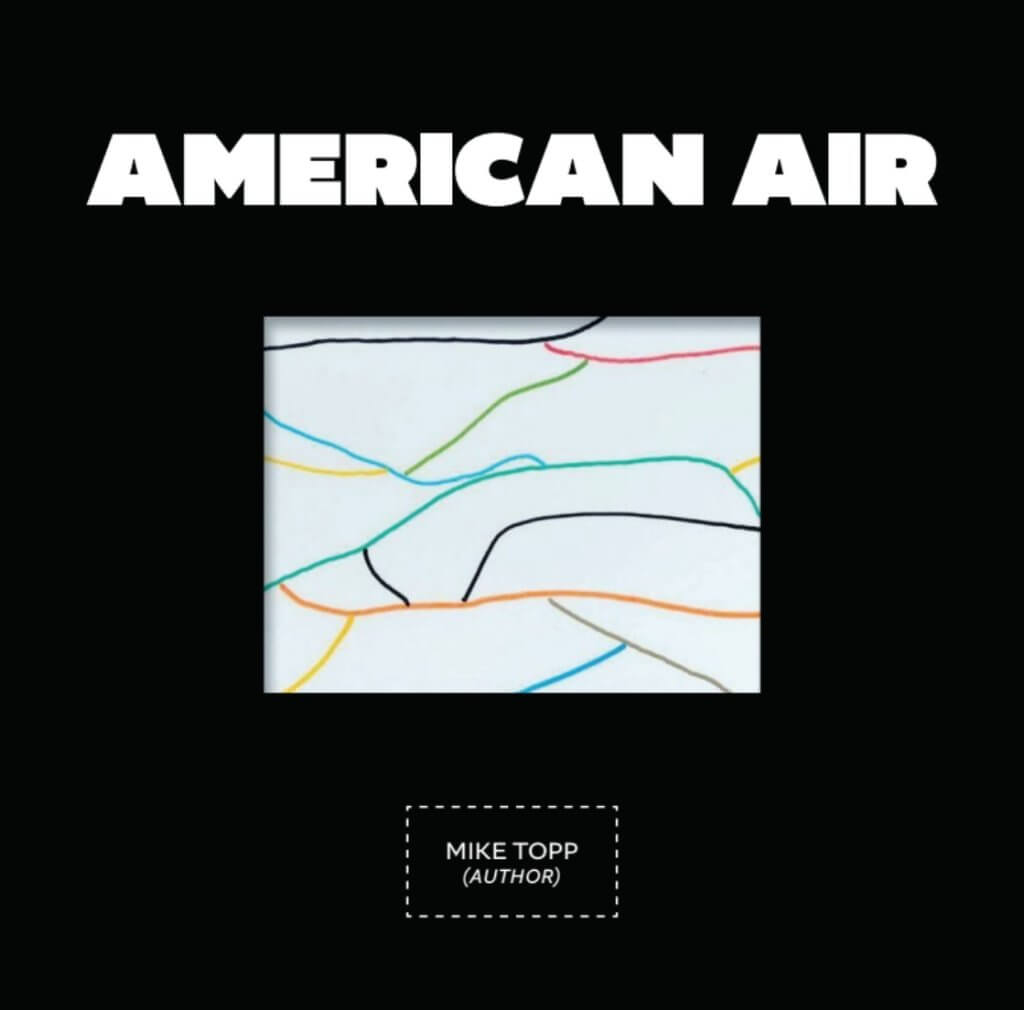
by Mike Topp
$25 | Perfect bound | 72 pages
Paperback | Die-cut matte cover | 7×7″
Mike Topp’s poems defy categorization. That’s why they are beloved by seamstresses, pathologists, blackmailers and art collectors.
–Sparrow
